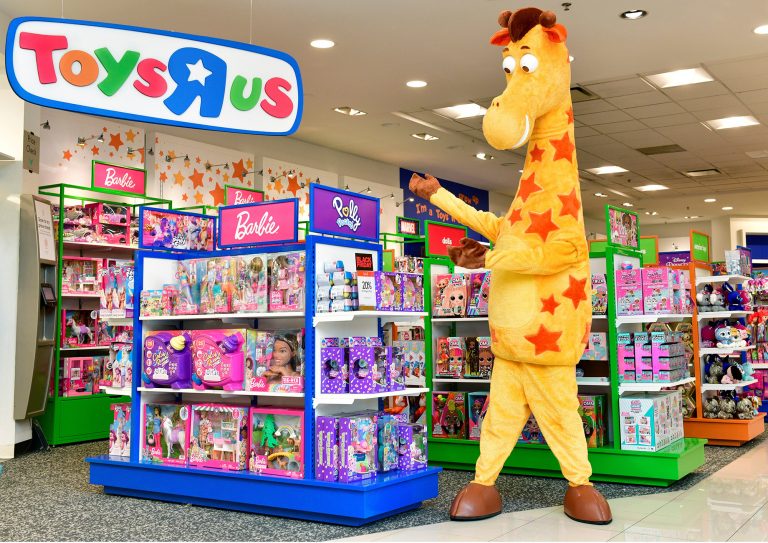On our series of companies that failed abruptly in the market due to their lack of innovation, not being open to change, companies making bad leadership decisions, etc. This article is about a once widely loved company that does not exist anymore. Toys R Us was a popular retail chain that specialized in toys, baby products, and children’s clothing.
It was founded in 1957 and had its headquarters in Wayne, United States. So, why did Toys R Us close? What led to the Toys R Us failure? A number of factors contributed to the downfall of the brand. Let’s read ahead and find out what they were.
The bright time of the company:
Toys R Us was a leading retailer that offered a wide selection of products at competitive prices. It helped boost the popularity of many toys in the 1970s. In 1969, they accumulated a profit of $11 million with $589 million in sales.
When the company opened its international flagship store in New York Times Square in 2001, it was the primary attraction for children of all ages.
The shop featured several themed areas, including a classic indoor Ferris wheel, a Barbie area with a life-size dream home, electronics, Jurassic Park with an animatronic T-Rex, Lego, and Wonka. For more than a decade, it attracted thousands of visitors as the ultimate toy shopping experience. In 2015, the shop closed.
The reasons why Toys R Us closed:
Underestimating their employees:
The Toys R Us management decided to reduce costs to control expenditures. However, the company reduced the costs in the incorrect areas, such as its operations, employees, and retail outlets.
The business fired its knowledgeable employees, and the remaining staff was having trouble keeping up with their growing workloads. Their shops suffocated from excess inventory and drowned in dust due to a lack of maintenance and cleaning services.
The changing customer preferences:
Customers of Toys R Us began to avoid shopping in their shops as a result of such poor management.
With time, consumers preferred the online experience over physical stores due to several reasons such as convenience, wider product selection, the ability to easily compare prices, and the ability to shop from anywhere at any time. Toys R Us failed to adopt e-commerce and online sales trends.
Amazon’s part in Toys R Us downfall:
In comparison, the company’s main competitor, Amazon, quickly embraced this new way of shopping and saw rapid growth as a result. Later, this became the main reason for Toys R Us failure.
The company established a 10-year partnership with Amazon in 2000 to be Amazon’s exclusive seller of toys. The company agreed to pay Amazon $50 million per year, plus a percentage of revenue, under the terms of the agreement.
The success of the joint toy shop led Amazon to initiate expanding its toy category. Their competitors were also included in the massive e-commerce business. Toys R Us eventually sued Amazon and won, enabling the retailer to cancel the agreement. The money won in court, however, was insufficient to compensate for the years it had spent developing its online presence and e-commerce plan.
When Toys R Us eventually launched an e-commerce site, it was too late, and it was riddled with technical difficulties that irritated customers.
They were ‘Optimistic’ and not ‘Innovative’
Additionally, Toys R Us management experienced management myopia. They were still assuming the company was the center of the toy market and nothing negative could happen to the firm.
Management myopia develops when employees hide facts and figures from top management to avoid being laid off. The employees manipulated customer surveys, which served as an essential success metric for the retailer’s headquarters.
Mark Cohen, director, of retail studies at Columbia University’s Graduate School of Business stated the Toys R Us chain as “guilty of serial mismanagement.” He also stated,
“Retailers today, especially in any kind of fashion or trend segment, have to progress. They have to morph, they have to modify. They have to represent the changes in the marketplace and their customers’ behavior. They have never been able to wrap their arms around the changes necessary, and this is the inevitable outcome.”
Summarizing the Toys R Us failure case study:
Toys R Us filed for Chapter 11 bankruptcy in 2017. The company declared in January 2018 it would close 180 of its approximately 800 stores in the United States. It had previously stated that it would close all 100 of its stores in the United Kingdom before its bankruptcy announcement.
Undermining the benefits that employee ideas can bring to the company, not prioritizing the customers, and not investing in innovation have led to the bankruptcy of many companies. And the number of companies that have made a fortune by utilizing the power of their employee innovation is huge.
By implementing an idea management tool in the workplace, you can provide a centralised place for your employees to share ideas and innovate together.
Get your hands on the tool today!



